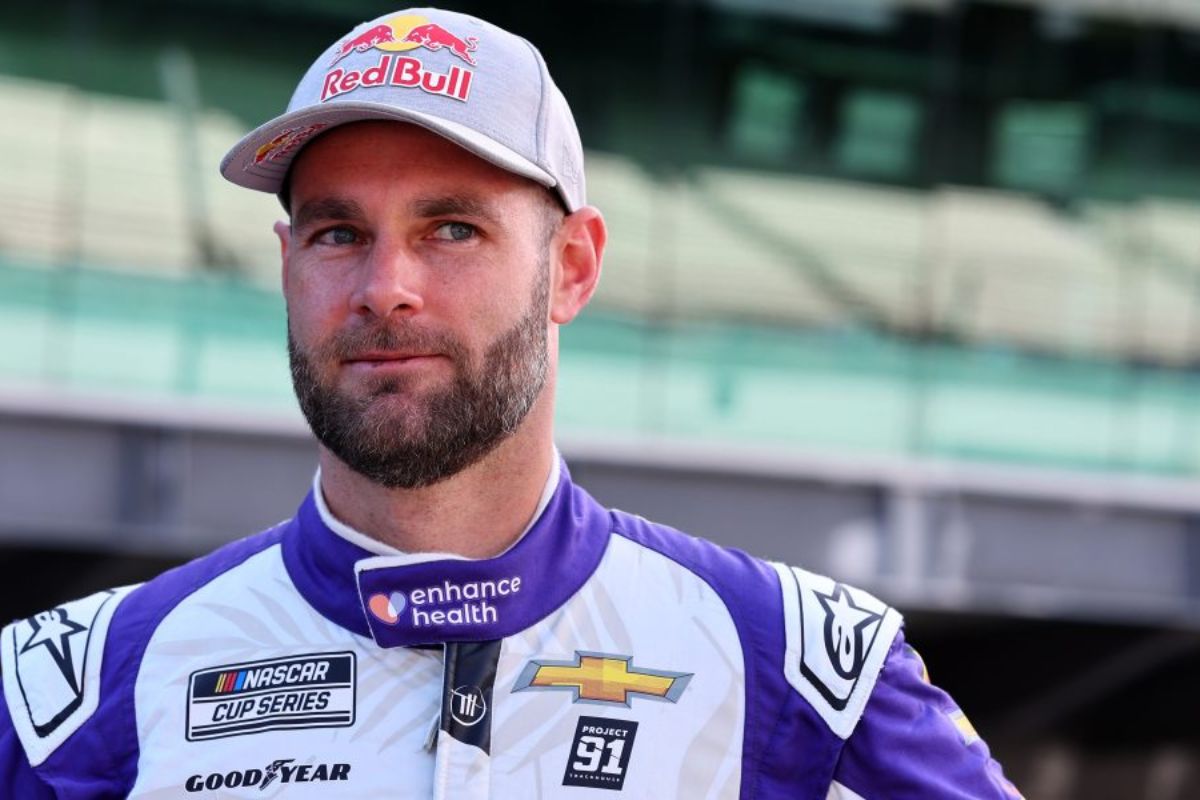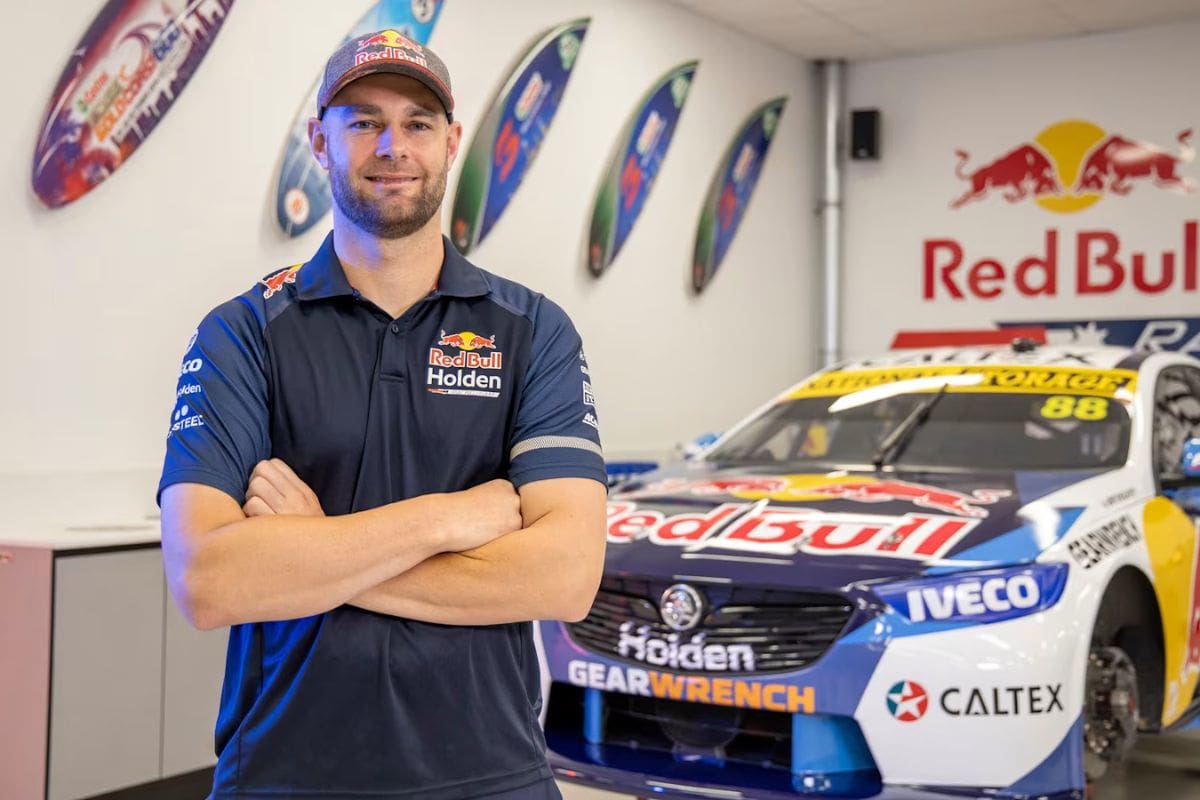Shane van Gisbergen Slams NASCAR: Shane van Gisbergen’s critique of NASCAR’s handling of Chase Elliott’s penalty brings forth the issue of unfair treatment in the sport. The inconsistent enforcement of track limits and penalties reduces trust and fairness among drivers. SVG’s call for a more flexible and balanced penalty system highlights the need for uniformity and transparency in NASCAR’s regulations. The demand for drivers to self-regulate track limits emphasizes integrity and sportsmanship. Harvick’s push for thorough track limit officiation shows the importance of fair competition and enhanced integrity. SVG’s stance questions NASCAR’s strict approach, hinting at necessary changes for a more just racing environment.
Key Takeaways
- SVG criticizes NASCAR’s treatment of Chase Elliott for track limit violations.
- SVG demands for a more fair and flexible penalty system in NASCAR.
- SVG highlights the need for consistent enforcement of track limits.
- SVG calls for a reassessment of NASCAR’s strict penalty approach.
- SVG emphasizes the importance of balanced officiation for all drivers.
Track Limit Issues at Circuit of The Americas (COTA)
Why are track limit issues at Circuit of The Americas (COTA) causing such controversy among drivers and officials? The answer lies in the fundamental principle of motorsports – fairness. In any competitive racing environment, maintaining track limits is essential to guarantee a level playing field for all participants. When drivers consistently exceed track boundaries to gain an advantage, it supports the integrity of the sport and diminishes the achievements of those who adhere to the rules.
At COTA, the challenges posed by track limit violations have been aggravated by the layout of the circuit itself. With wide runoff areas and tempting opportunities to cut corners, drivers are constantly tempted to push the boundaries of track boundaries. This not only raises concerns about safety but also creates an atmosphere of uncertainty and frustration among competitors.
Furthermore, the inconsistent enforcement of track limits at COTA has only added fuel to the fire. When some drivers are penalized for exceeding track boundaries while others seem to get away with it, tensions run high, and accusations of favoritism or bias start to surface. This lack of uniformity in applying the rules reduces the trust in the governing bodies and leads to disputes that overshadow the actual racing.

Penalties and Repercussions
During the COTA’s racing action, a whopping 40 track penalties were dished out to drivers for pushing beyond the limits. However, it was Shane van Gisbergen who bore the massive punishment. Despite crossing the line in second place, the Kiwi was slapped with a massive 30-second penalty for exceeding track limits. This setback saw him decline to the 27th position in the standings once the dust settled from the race.
While track limits are put in place to maintain safety and fairness during races, the application of penalties must be proportional to the offense committed. In van Gisbergen’s case, the 30-second penalty seems excessively harsh, especially considering his strong performance throughout the race. This incident has shed light on the need for a more distinct approach to enforcing track limits, one that takes into account the specific circumstances of each infraction.
The repercussions of van Gisbergen’s penalty go beyond just his individual standings. It calls into question the consistency and fairness of penalties in motorsports, prompting discussions about the need for greater transparency and clarity in the enforcement of rules. Moving forward, it is essential for race officials to strike a balance between upholding track boundaries and ensuring that penalties are applied judiciously to maintain the integrity of the sport.
Van Gisbergen’s Perspective
Van Gisbergen’s approach to addressing the track limit controversy at the Circuit of The Americas diverges from the proposed idea of officiating the entire road course track, offering a distinct perspective that emphasizes clarity and driver accountability. Van Gisbergen’s stance highlights a fundamental principle in motorsports – that drivers should be responsible for adhering to track limits without needing constant surveillance. By demanding for a system where drivers are expected to self-regulate their adherence to track boundaries, van Gisbergen shows the importance of personal integrity and sportsmanship in racing.
His perspective reflects a deep-rooted belief in the essence of racing, where drivers are not only competitors but also stewards of the sport. Van Gisbergen’s proposal challenges drivers to uphold the spirit of fair play and uphold the rules without the need for constant monitoring. This approach not only fosters a culture of respect and integrity but also elevates the level of competition by placing the onus on individual drivers to race within the designated track limits.
In a sport where split-second decisions can make the difference between victory and defeat, van Gisbergen’s emphasis on driver accountability serves as a beacon for upholding the integrity of motorsport. By demanding for a system that values self-regulation and personal responsibility, van Gisbergen’s perspective offers a rejuvenating take on how track limits controversies can be addressed in a manner that promotes fairness and sportsmanship.
Elliott’s Penalty and SVG’s Critique
In light of the recent controversy surrounding Elliott’s penalty at the Circuit of The Americas and SVG’s critique of NASCAR’s enforcement, the issue of proportional penalties in response to track limit violations has come under scrutiny within the motorsports community. The incident involving Chase Elliott was not a deliberate act of cutting the track but rather a minor infraction that resulted in a disproportionately harsh penalty. SVG’s comparison to the Australian racing scene, where drivers are given more leeway and multiple warnings before severe penalties are imposed, highlights a key disparity in how NASCAR handles similar situations.
NASCAR’s approach to penalizing track limit violations appears rigid and lacking flexibility when compared to other racing series. The notion of ‘three strikes’ or a progressive penalty system, as seen in Australia, could provide a fairer and more consistent way to address these issues without unduly punishing drivers for minor infractions. SVG’s criticism is warranted, as NASCAR’s strict enforcement may accidentally discourage drivers from pushing the limits and taking calculated risks during races.
Elliott’s penalty and SVG’s critique show the need for NASCAR to reassess its penalty system concerning track limit violations. Implementing a more distinct approach that considers the intent and severity of the violation could lead to a fairer and more balanced enforcement strategy, fostering a competitive yet safe racing environment for all drivers involved.
“You just need a bit more leeway, like the penalty didn’t really fit the crime. In Australia, we have this every year at Surface Paradise with the curbs there, and you get kind of three strikes, or you’re doing it every lap, you’ll get policed.” – (SVG)
“I couldn’t really do much, but the one I couldn’t understand was Chase Elliott got one. He had a monster moment, it was an awesome save. He lost time, probably scared himself, lost time the next lap, taking it easy. It’s not advantage but he gets a thirty-second penalty, so that’s a bit harsh for me.” – (SVG)
Kevin Harvick’s Call for Change
Former SHR driver Kevin Harvick’s demand for thorough track limit officiation on road course races signals an important shift in NASCAR’s approach to enforcing racing boundaries. Harvick’s view highlights a pivotal aspect that has been overlooked in NASCAR for far too long. By emphasizing the need for stricter enforcement of track limits on road courses, Harvick is pushing for a fairer and more competitive racing environment.
When it comes to road course venues, they present a different challenge compared to traditional ovals or superspeedways. Unlike those tracks, road courses can’t be lined with railings or walls at every twist and turn. This opens up opportunities for drivers to cut corners and gain an advantage. As they approach the turns, some drivers might try to improve their track position by veering off the actual racing surface. Kevin Harvick sees this as a problem, and he believes that stricter enforcement across the entire race track could result in better races in the future.

Kevin Harvick’s call for change is not just about rules and regulations; it’s about upholding the essence of NASCAR – fair play, skillful driving, and respect for the sport. By addressing the loopholes in track limit officiation, NASCAR can elevate the level of competition and bring back the thrill and excitement that fans and drivers yearn for. Harvick’s bold stance should serve as a wake-up call for NASCAR officials to reassess their approach and prioritize the integrity and spirit of racing above all else.
“From a road race racing standard, I believe that we need to race on the track. I think that COTA would actually race better if we had track limits. NASCAR’s point is, hey, we’re not to the point of being able to officiate it yet. They need to hurry up, we need to officiate every corner on the road course like it needs to be officiated, and I think track limits will make every road course a better race track.” – (Kevin Harvick)
News in Brief
The management of Chase Elliott’s penalty at COTA by NASCAR has ignited controversy and criticism from Shane van Gisbergen and other drivers.
The inconsistency in enforcing track limits and penalties needs to be addressed for the integrity of the sport.
It is vital for NASCAR to reassess their decisions and make necessary changes to guarantee fair treatment for all drivers on the track.
Our Reader’s Queries
Q: Where did Shane Van Gisbergen finish?
A: In his debut NASCAR Cup race at Austin, Texas, Kiwi driver Shane van Gisbergen fell short of expectations. Despite starting 12th, the former Supercars champion faced challenges keeping up with the leaders, settling for a 21st place finish.
Q: What supercar does Shane Van Gisbergen drive?
A: Driving the No. 28 Chevrolet SS for Pinnacle Racing Group, he transitions from the Supercars Championship, notably with Triple Eight Race Engineering’s No. 97 Chevrolet Camaro ZL1. A three-time Supercars Champion, he secured titles in 2016, 2021, and 2022.
Q: Why is Shane van Gisbergen so good?
A: He epitomizes the essence of a true racer, driven by an unwavering passion for speed and competition. With a keen ability to analyze race dynamics and execute strategic maneuvers, he stands out for his unparalleled racing prowess.
Also Read: Shane Van Gisbergen’s Shocking Penalty Costs Him 2nd Place at COTA


